
A detail in Bruno Weber Park, a magical realist sculpture garden and Gesamtkunstwerk outside of Zürich, created from the early 1960s onwards by the Swiss artist Bruno Weber. Photographed by Marc Asekhame for PIN–UP
Are outsider artists the Starchitects of the Instagram age?
The Dutch Kremlin is neither religious nor political. Ger Leegwater, a 77-year-old retired sheet-metal worker, has been toiling away on the structure in his backyard in Winkel, a village in the province of North Holland, for over 30 years. Towering onion domes announce his eclectic vision to passing cars: 5 euros will buy you entry to this unlikely Gesamtkunstwerk on the polder. On the day I visit, Leegwater shows me around his citadel of symbolism with a hunched back and a hero’s smile. While his homemade website cites a major influence in Baroque master Francesco Bartolomeo Rastrelli (one of the architects of St. Petersburg’s Winter Palace), in person Leegwater credits his television. In fact, he didn’t visit Russia until decades after erecting his Kremlin’s first tower. The Russians are “good people,” he assures me, but Putin is a “bad man,” he adds, slicing his hand across his neck with his tongue out. It’s the second week of the war.
In Leegwater’s universe, centuries and continents collide. Dragons, Cleopatra, geese, Neptune, and the Virgin Mary all appear chiselled above doorways and affixed to façades. There’s no need for Venturi and Scott Brown’s concept of the decorated shed in this Postmodern mishmash — Leegwater has no client to please or function to accommodate. The spec is its maker’s fantasy. Why not add a cross and a hammer and sickle to the spire?

Visitor at the ”Dutch Kremlin,” a work-in-progress folly in northern Holland built by self-taught architect and artist Ger Leegwater. Image courtesy of Libertad Gómez
Leegwater’s folly is an architectural gem in the noble tradition of outsider art. For Jean Dubuffet, who coined the term art brut, the output of such solitary figures was “more precious than the productions of professionals” because their work emerged “from pure and authentic creative impulses.” Working outside the market, these marginal masters were free from societal expectations and constraint. The Surrealists especially loved “naïve” architecture, because to them such naïvety contained an unconscious expression of artistic genius. One such outsider architect, Ferdinand Cheval (1836–1924), attracted a slew of avant-garde fans and was memorialized in a 1932 Max Ernst collage, a 1937 Picasso drawing, and a 1984 French postage stamp. Over a 33-year period, Cheval, the postman of Hauterives in France’s Drôme département, built his Palais Idéal with stones collected on his daily mail route. What TV was to Leerwater, the lithograph was to Cheval. Far-flung images inspired him to meld seemingly incongruous design elements into a holistic union — one part medieval castle, another Hindu shrine, Swiss chalet, or Arab mosque. Around the temple-like structure, Cheval hand-carved messages like: “If you look for gold you will find it in elbow grease” and “The Pantheon of an obscure hero.”
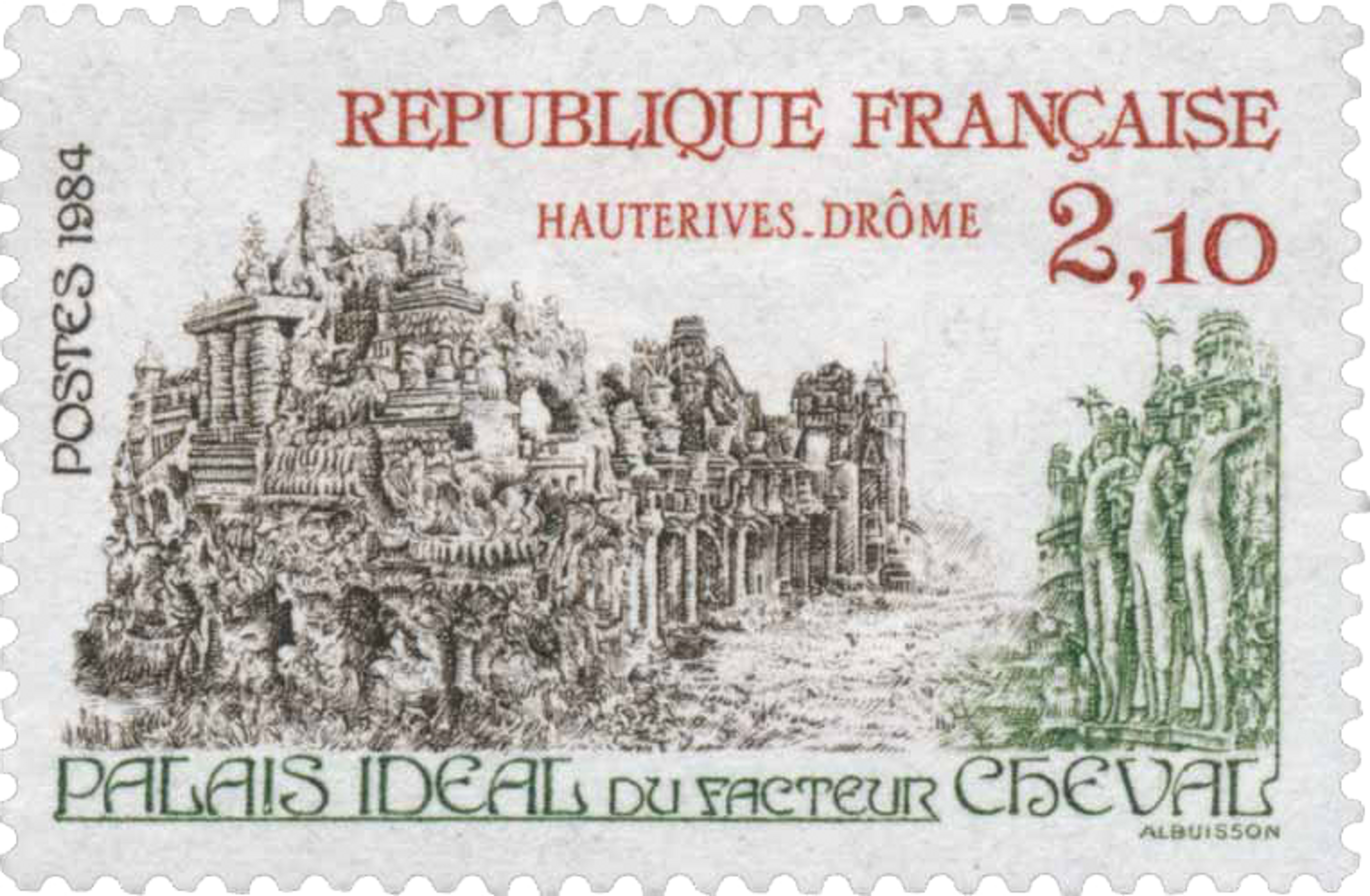
The 19th-century Palais Idéal in rural France was an inspiration to many famous artists in the 20th century. In 1984 the French postal service dedicated a stamp to its creator, mailman and amateur artist Ferdinand Cheval (1836–1924).
Cheval’s Palais Idéal was protected with landmark status in 1969, thanks in part to culture minister André Malraux, who ignored the highly unfavorable report written by his own committee. Preserving these eclectic structures once the builders pass is rarely a simple affair. Take Bruno Weber Park near Zürich, which is a legal nightmare. Weber, who died at the age of 80 in 2011, began transforming his family estate into a fairy-tale castle in 1962 — but we’re still waiting for the happy ending.
While Modernist apartment blocks were springing up all over mid-20th-century Europe, Weber experimented with a very different style of béton brut, resulting in an ensemble that is very Gaudí, very Gucci. Visitors encounter mosaic caterpillars, colorful flower sculptures, and concrete flying fish. Two dragons guard the entrance to Weber’s “magic forest,” while the villa’s interior recalls Alice’s drug-fueled wonderland. The local authorities weren’t happy. A three-decade building-permit dispute was only resolved in 1998 when the canton created a unique “zone for artistic creation” around Weber’s unlicensed vision. When folk art becomes architecture, it must contend with zoning laws. While Weber’s widow remains ensconced in their villa, board squabbles and financial disputes have twice temporarily closed the park. Yet visitor numbers have exploded — people want a piece (or at least a photo) of Weber’s uncompleted fairy tale.
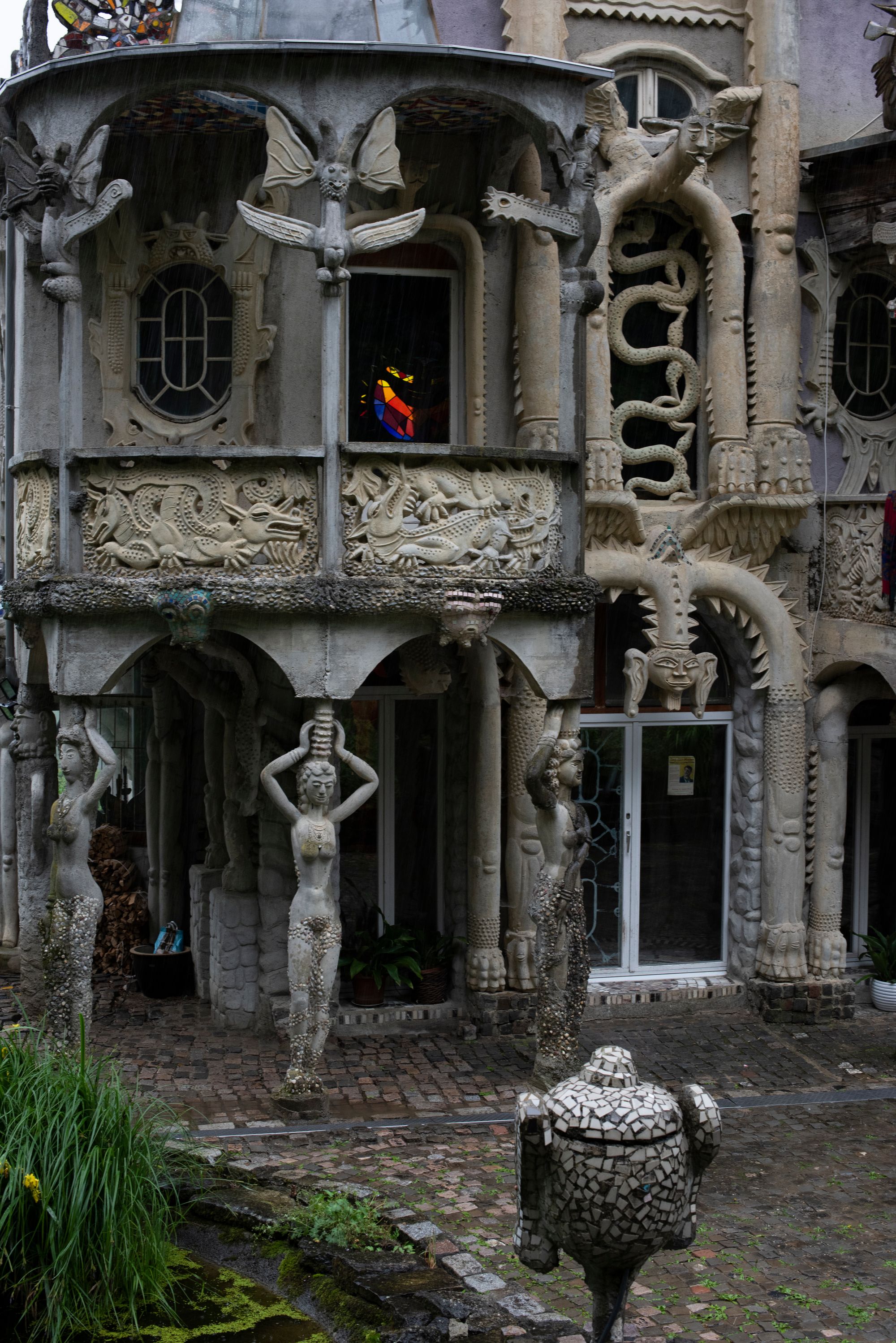
Bruno Weber Park, a magical-realist sculpture garden and Gesamtkunstwerk outside of Zürich, created from the early 1960s onwards by the Swiss artist Bruno Weber. Photographed by Marc Asekhame for PIN–UP.

A detail in Bruno Weber Park, a magical realist sculpture garden and Gesamtkunstwerk outside of Zürich, created from the early 1960s onwards by the Swiss artist Bruno Weber. Photographed by Marc Asekhame for PIN–UP
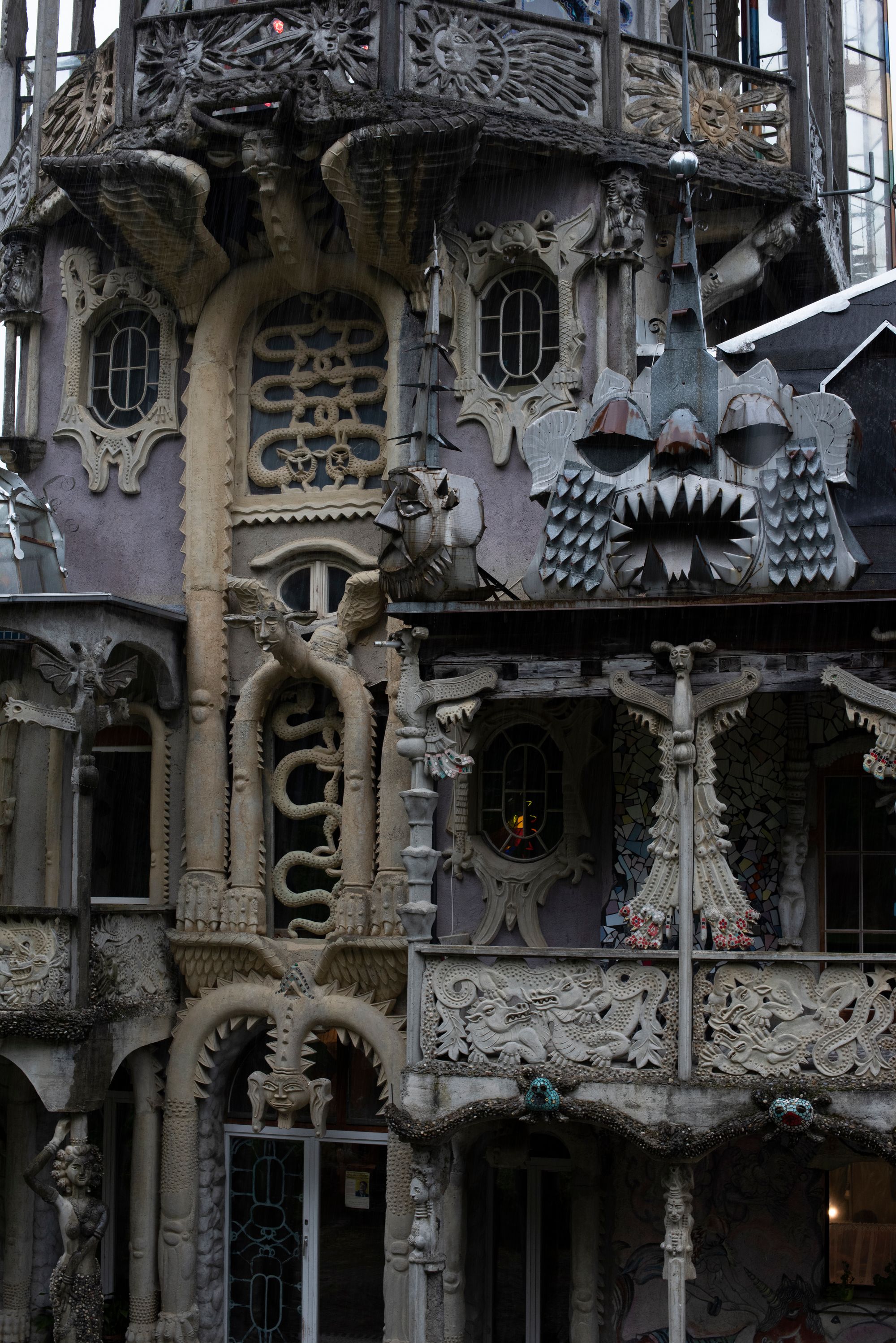
A detail in Bruno Weber Park. Photographed by Marc Asekhame for PIN–UP
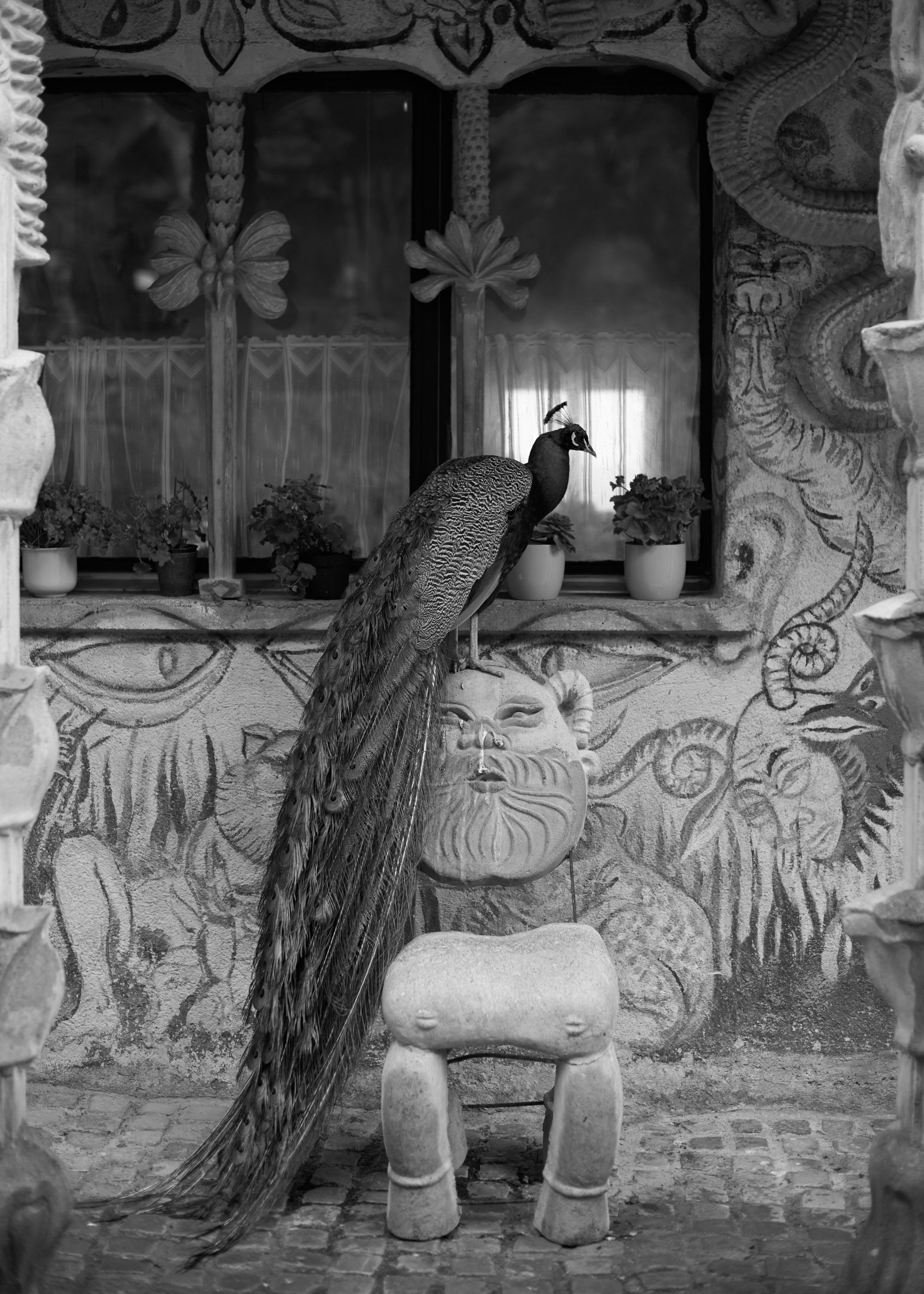
Bruno Weber Park. Photographed by Marc Asekhame for PIN–UP
Philadelphia’s Magic Gardens sit at precisely this meeting point, but without the big budget. Built by 83-year-old artist Isaiah Zagar, their colorful labyrinth spans two city lots and the interior of a three-story home. His magic extends beyond the official gardens: over 200 of Zagar’s wall mosaics can be found in the surrounding neighborhood. All of this is tied to planning history: in the 1960s, a proposed expressway made real-estate values in the South Street area plummet, bringing in Beats, hippies, punks, and the Zagars. Hanging on South Street is a rite of passage for Philly kids, and the aesthetic character of the neighborhood is as tied to Zagar’s unlicensed architectural interventions as it is to its sex shops and Rasta stores. The dreamland on Tenth and South itself is a holy site of first dates and first joints (mine included). Zagar has arguably had far more impact on Philadelphia’s collective imagination than any licensed architect of the past 30 years.
Could outsider artists and their visionary environments be the sleeper
starchitects of the Instagram age? I never considered it, but a recent Alexandria Ocasio-Cortez post made me think twice. At Philadelphia’s Magic Gardens, surrounded by a symphony of mirror fragments, tiles, bike wheels, and glass bottles, the perfervid congresswoman poses with a French bulldog on her lap above a motivational caption that likens individual political activism to the pieces in a mosaic. If installation art usually performs better than paintings on Instagram, because you can semi-put yourself inside (or beside) the work, an art-architectural experience like Magic Gardens is even better — just ask Yayoi Kusama, the estate of H.R. Giger, or any Serpentine Pavilion designer. As the imageability of architecture becomes increasingly essential to its marketability, clever artists move in the opposite direction, designing spatial environments that offer people a photo-worthy experience. Hal Foster calls this convergence the art-architecture complex.
“Pop Architecture,” as Ada Louise Huxtable theorized it in an October 4, 1964 article in The New York Times, has mass appeal because it operates via recognizable symbols, forms that reflect popular taste rather than any elite vision. “Its standards are set not by those with an informed and knowledgeable judgment, but by those with little knowledge or judgment at all” she lamented. “As such, it is a significant first: probably the only architectural style in history to be formed at the bottom, rather than at the top.” Yet Pop Architecture should be theorized as much more than mid-century sprawl, sponsored pavilions, and Las Vegas. It has long been detached from commercialism — just ask Cheval, Leegwater, Weber, and Zagar. “The characteristics of Pop Architecture are gaudy misuses of structural effects for aggressive and often meaningless eccentricities of form,” continued Huxtable. Was she thinking of the Palais Idéal or Magic Gardens? In the symbolic misuses and broken mirrors of outsider architecture, people can see themselves. And like the algorithms driving our feeds, we latch onto recognizable patterns and faces. These sites are self-made fantasies for a selfie world, no permit required.
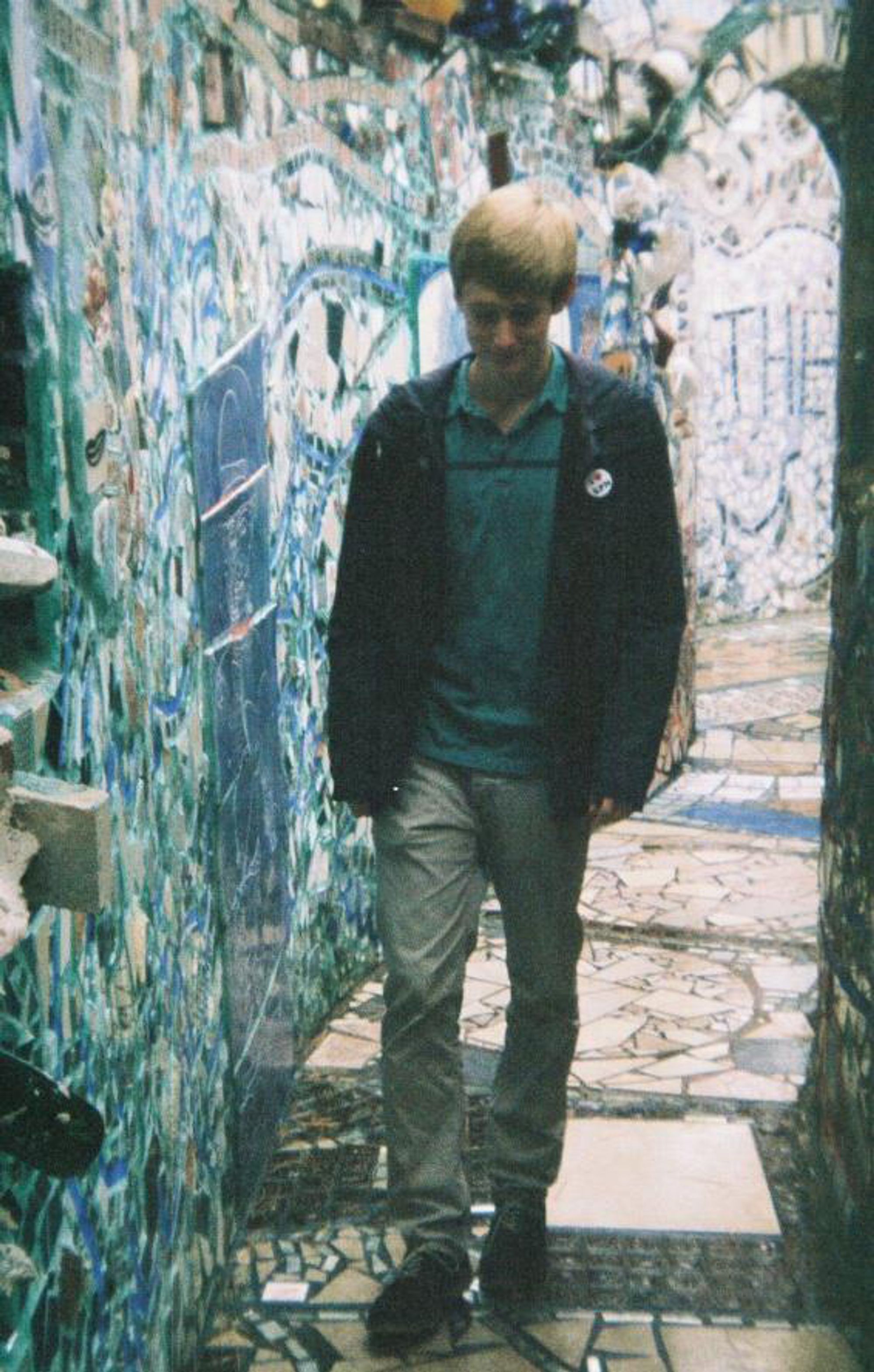
The author as a teenager visiting Philadelphia’s Magic Gardens. Image courtesy of Andrew Pasquier